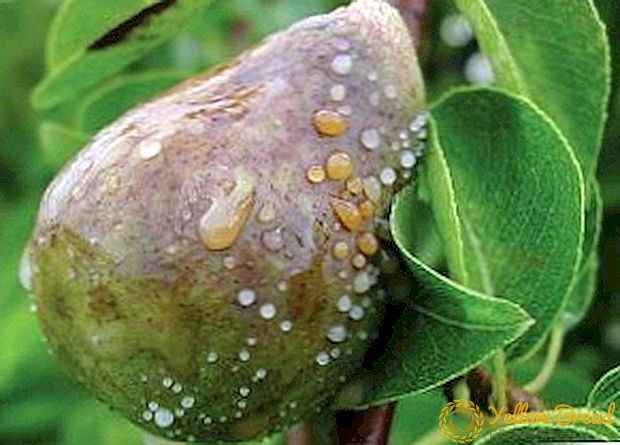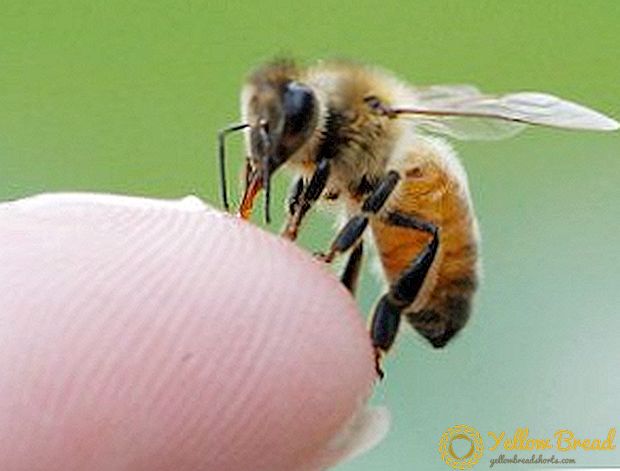 Modern antiparasitic agent, widely used for the treatment of farm animals - "Ivermectin", has such qualities as versatility and high efficiency. According to the instructions for use, the drug is used in veterinary medicine for the treatment of ecto-and endoparasites of domestic animals (cats, dogs, goats, horses, pigs and others), as well as for the treatment of helminthic helminth infections in humans.
Modern antiparasitic agent, widely used for the treatment of farm animals - "Ivermectin", has such qualities as versatility and high efficiency. According to the instructions for use, the drug is used in veterinary medicine for the treatment of ecto-and endoparasites of domestic animals (cats, dogs, goats, horses, pigs and others), as well as for the treatment of helminthic helminth infections in humans.
- Composition
- Release form
- For whom
- Pharmacological properties
- Dosing and Administration
- Cattle
- Sheep and goats
- Pigs
- Dogs and cats
- special instructions
- Side effects
- Contraindications
- Shelf life and storage conditions
Composition
1 milliliter of the drug contains 10 milligrams of the active ingredient ivermectin and 40 milligrams of vitamin E. A solution is obtained by bacterial fermentation of actinomycetes of the genus Streptomycetes (lat. Streptomyces avermitilis).
Auxiliary components of the drug: phenylcarbinol, polyethylene oxide 400, water for injection, novocaine, methylcarbinol.
Release form
There are three forms of manufactured ivermectin containing drugs:
- pills;
- ointment for the treatment of skin parasites;
- injection.

Depending on the volume, for the treatment of animals, Ivermectin is produced in hermetic glass ampoules, insulin vials, glass or polyethylene bottles, and glass bottles. The capacity of the container can be 1, 4, 20, 50, 100, 250 and 500 milliliters.
Insulin vials and ampoules are packaged in 10 pieces per carton. A sterile solution of "Ivermectin" has a transparent or opalescent colorless or pale yellow color.
For whom
Ivermectin is applicable to the treatment of such animals:
- cattle;
- pigs;
- horses;
- sheeps;
- goats;
- deer;
- dogs;
- cats
 Tablets and ointments are commonly used to treat people.
Tablets and ointments are commonly used to treat people.Pharmacological properties
The active substance of the class of macrolides, capable of destroying parasites, is active in the larval and sexually mature phases of development of the nematodes of the gastrointestinal tract and lungs, as well as the larvae of the gastric, subcutaneous, nasopharyngeal gadflies, blood sludge, sarcoptoid ticks and lice.
Ivermectin affects the amount of chlorine ion current through the membrane coating of muscle and nerve cells of parasites. A change in current leads to their paralysis, and subsequently - to ruin.
The drug is rapidly absorbed and distributed in the tissues and organs of the infected pet, providing a long-lasting effect on the parasites. The drug is excreted in the urine or bile.
According to the strength of the effect on the body, the substance Invermectin belongs to the 1st class of danger (very dangerous).
At observance of the recommended dosage, the medicine does not have a negative effect on sick pets. When released into the external environment is easily destroyed.  Prescribe the drug in the event of such diagnoses in animals:
Prescribe the drug in the event of such diagnoses in animals:
- ascariasis;
- bunostomosis;
- hemonhoz;
- filariasis;
- oxyuratosis;
- metastrongylosis;
- sarcoptosis (scabies);
- fever;
- strongyloidiasis;
- Trichostrongyloidosis;
- protostrongylosis;
- trichocephalosis;
- dictyocaulosis;
- esophagostomosis;
- onchocerciasis;
- Mulleriosis;
- enterobiosis;
- cooperative disease;
- bunostomosis.
Dosing and Administration
The animals are injected subcutaneously or intramuscularly, following the rules of antisepsis and asepsis.
Cattle
Cattle are cured by prescribing 1 milliliter injection for every 50 kilograms of body weight (0.2 milligram of "Ivermectin" per 1 kilogram of animal weight). It is advisable to inject the medication into the neck or croup. 
Sheep and goats
Sheep, goats, and deer are prescribed medication in a ratio of 1 milliliter per 50 kilograms of animal weight. Intramuscular injection should be injected into the neck or croup.
Pigs
Pigs are administered "Ivermectin" intramuscularly at the rate of 1 milliliter per 33 kilograms of animal weight. Enter it to the neck or into the inner surface of the thigh.
Dogs and cats
The dosage for dogs is 200 micrograms per kilogram of pet's weight. Tolerability of the drug in dogs is bad, so you should strictly observe the ratio of mass and drug.
For cats and rabbits, safer and more effective veterinary drugs are commonly used.However, according to the instructions, these animals should be administered medication at the rate of 200 micrograms per 1 kilogram of animal weight. Weakened and elderly pets dose calculated on the basis of their weight. 
special instructions
In case of nematodoses and gadfly invasions, injections are made once. In case of a disease by animals with arachnoentomoses, the medicine is administered in two stages, with an interval of 8-10 days.
In case of nematodoses, livestock treatment is carried out in the autumn, before they are stalled for the winter and in the spring before they are brought to pasture. Aquatic invasions are treated after the end of the period of insect activity. Arachnoentomozy treated for indications.
When processing a large mass of animals, you must first test the drug on a group of 5-7 heads. If after 3 days of complications are not noticed, you can proceed to the treatment of the entire population.
Side effects
In general, with the recommended doses of side effects in animals is not observed.  In case of overdose, the following symptoms may appear:
In case of overdose, the following symptoms may appear:
- swelling of the drug administration area;
- lack of coordination of movements;
- lying position;
- increased salivation;
- swollen lymph nodes;
- itching of the skin;
- inflammation in the area of parasite accumulation.
- apathy or depression;
- anorexia;
- vomiting reflex;
- dilated pupils;
- convulsions;
- profuse salivation;
- diarrhea.

Contraindications
"Ivermectin" should be applied strictly according to doctor's prescription. It is strongly not recommended to use it in such cases:
- when infectious diseases are present;
- with exhaustion or severe weakening of the body;
- during pregnancy and lactation of females;
- youngsters have been ill.
Shelf life and storage conditions
Store "Ivermectin" should be in closed packaging in a dry, protected from children place.The optimal storage temperature is 0-30 ° C. Not recommended for exposure to the drug ultraviolet rays. It is better to keep it away from food.
The expiration date of the drug expires after 3 years from the moment of its production, however, after opening the vial, the properties of the active substance persist for about 24 days.  Antiparasitic drug is quite effective in treating a host of animal diseases, but its use must be discussed with a veterinarian.
Antiparasitic drug is quite effective in treating a host of animal diseases, but its use must be discussed with a veterinarian.






